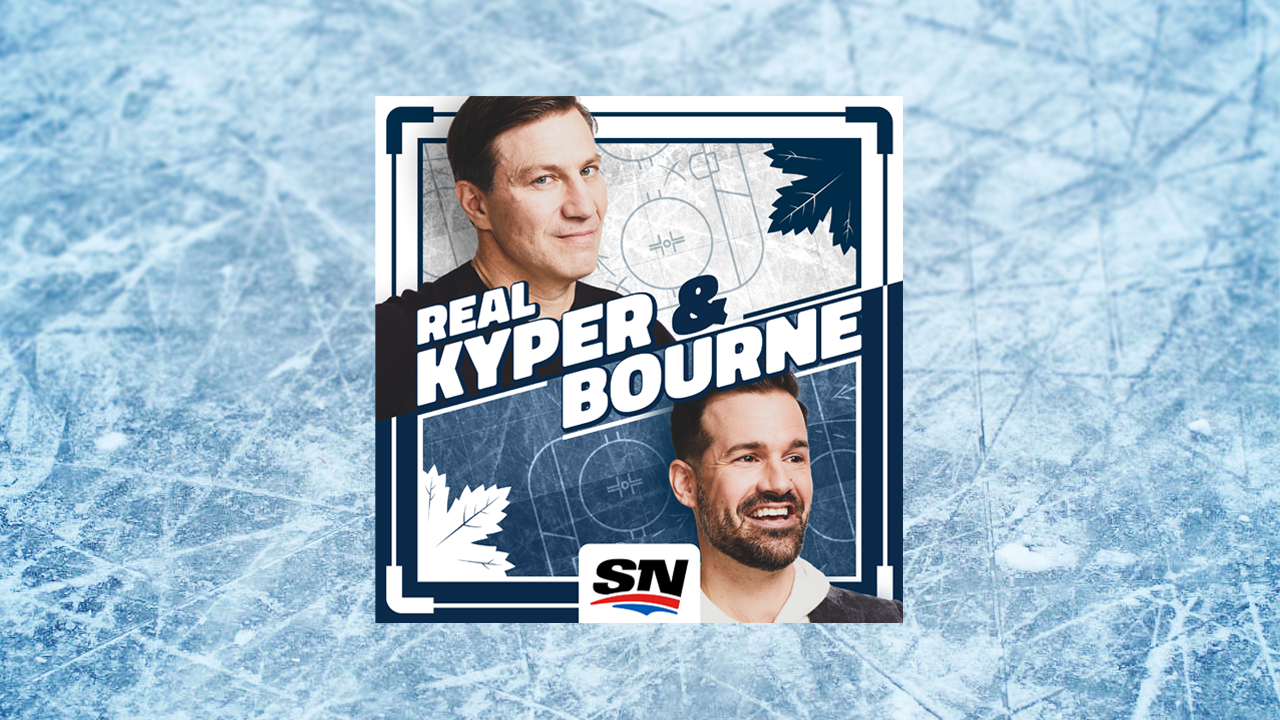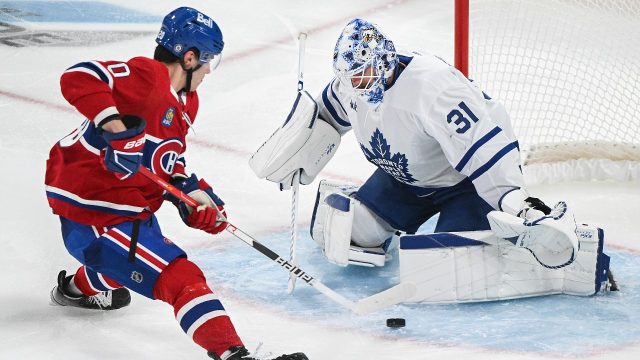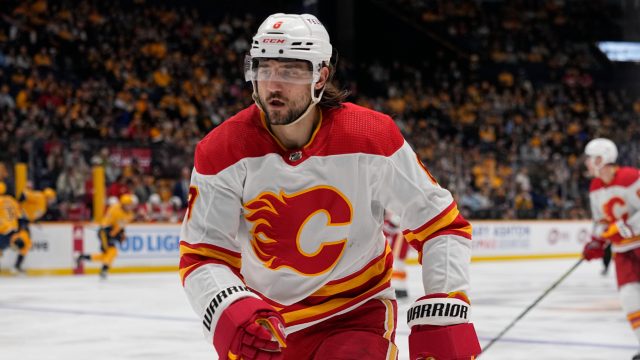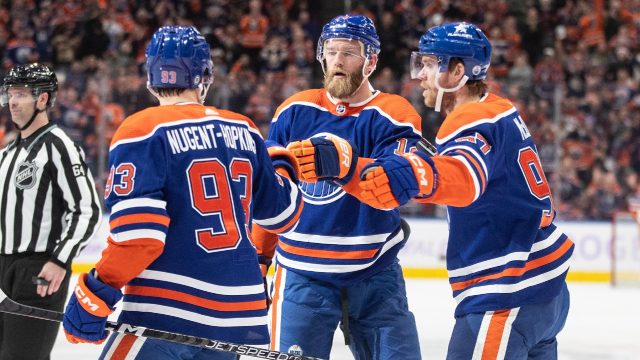
A quick mix of the things we gleaned from the week of hockey, serious and less so, and rolling four lines deep. Well, that’s the last time I scrum Andrei Vasilevskiy.
1. It’s no secret the Toronto Maple Leafs tried to re-sign Luke Schenn in free agency.
Just as it’s no secret the hockey world at large celebrated the 34-year-old defenceman’s three-year, $8.25-million windfall with the Nashville Predators, who face off against the Leafs Saturday in a “revenge” date for 2023 playoff rentals Schenn and Ryan O’Reilly, another sorely missed asset in Toronto.
Score one for a good guy.
Schenn’s big 2023 deal was a big deal — his longest and richest in seven years(!) — because the man himself will tell you that he believed his career was over in 2018-19, when he’d been demoted to the farm.
I spoke with the always candid Schenn about how Adam Oates (and Dallas Eakins) helped him resurrect his NHL life. The story, in Schenn’s words:
“I was done. I was in the minors, cleared waivers, the whole thing. You get passed up by 30 teams, you’re like: What the hell? I’m 29 years old. And I was commuting every day to San Diego from Newport [Beach]. I didn’t know if I needed to get a house there, so I was driving back and forth [90 minutes each way]. Dallas [the Gulls coach at the time]was unbelievable for me, too.
“I got down there, and the first thing he said to me was: ‘Obviously, this isn’t the way you drew it up, but help us win some games, and I’ll do whatever I can to help get you back in the NHL.’ Every day he was pulling me aside, like, ‘What do you think of this?’ Or, ‘Trust your skating here.’ Whatever it took to build me back up. He was unbelievable to me. I still keep in contact with him today. When I got traded to Toronto or landed in Tampa, he was always one of the first guys to reach out.
“I was in San Diego for a couple months. What happened was, the Blues were in last place [in 2019]. My brother [Brayden] hadn’t scored in 14 or 15 [games]. And O’Reilly was having a good season and had worked with Oates. O’Reilly told my brother: ‘Hey, give him a call.’ My brother talked to Oatesy. Sure enough, scored the first game.
“After about a week of working with my brother, Oatesy goes, ‘I never, ever go looking for players, but I gotta ask you: I used to coach against Luke. What the hell is going on?’ So, I called him. I met with him for a beer. He was in L.A. at the time, and I was going back and forth from San Diego.
“A week later, I got traded to Vancouver, but I had to start in [AHL] Utica. I asked Brian Johnson, the assistant GM of Vancouver, if I can get Oatesy down there. He came and worked with me for a few days in Utica. I’d show up at 7 a.m. at the Utica rink, and then go practise with Oatesy. It was crazy. But I got ‘er going from there. Honestly, I would never be in the NHL if I never started working with him.
“I’m in constant contact with him. He’s got a bunch of guys [as clients], but I have a really good relationship with him, where I pick up the phone and call him, and you’ll get good clips.
“You’ll work on things in the summer, and you’ll see how it applies. Some of the video is of yourself, but a lot of it shows tendencies around the league. So, I see other defencemen making that play or that mistake or missing that coverage or whatever. Obviously, guys have different skill sets, but a lot of the reads are the same.
“Yeah, wish I met Oatesy 10 years ago.”
2. During the Boston Bruins’ spring exit meetings, Jim Montgomery had a request of his most dangerous offensive weapon.
The head coach realized dressing room leaders Patrice Bergeron, David Krejci and Nick Foligno would not be returning. He began to ask David Pastrnak for more. More leadership. More command of the team, on and off the ice.
“Don’t worry, Monty,” Pastrnak asserted, swiftly. “I got it.”
The affable and, at times, outlandish sniper with the wild pre-game outfits and distinctive accent has made good on his word.
Pastrnak is on pace for a 118-point campaign, which would top last season’s career high of 113, and has a legit crack at becoming the NHL’s first back-to-back 60-goal man since Pavel Bure accomplished the feat in 1994.
Moreover, Pastrnak has risen to the challenge of becoming a vocal leader in Boston, where previously he did all his talking with his suits and shoulders and stick blade.
“I had great teachers throughout my career,” the 27-year-old says. “Those big leaders are not here now. So, I feel like sometimes it’s good for me to speak up.”
Montgomery has noticed the cranked volume and approves.
“He’s much more talkative. He’s very positive on the bench, where last year he didn’t concern himself with having to do that because we had so many other great leaders,” Montgomery says. “He’s grown like that, and he’s also grown in his playmaking.
“He’s taken it on by himself.”
Trent Frederic admits that the Bruins have gotten a notch quieter in the absence of Bergeron and Foligno, long-serving captains in the league, but finds it encouraging that Pastrnak is using his voice.
Newcomer Kevin Shattenkirk, too, is discovering layers to the game of a guy who is developing into much more than an accurate shot.
“I just assumed that he was just a pure goal scorer,” says Shattenkirk, who spent the past three seasons in the Western Conference. “He’s tremendous at creating off the rush, off entries, getting the puck down the boards and kinda pulling up and making those touch plays and those little seam passes.
“He sees plays happening three steps ahead, and I think that’s a special talent.”
3. Frederic, 25, grew up in St. Louis alongside (now-injured) Toronto goaltender Joseph Woll. The friends met in kindergarten, their paths intertwined all the way through their Boston College days.
Around the Bruins forward’s neck hangs a keepsake chain, and from that a St. Christopher medallion. It was a First Communion gift Frederic received as a youngster, and it holds meaning for Woll too.
Flashback to minor hockey in Missouri: Frederic was the starting goalie on a summer squad. Woll was the alternate. A young Frederic was forced to miss a big tournament because it clashed with his First Communion ceremony. Mom and Dad prioritized religion over hockey.
Woll snatched the net and excelled.
Frederic, who scored on Woll last Saturday, jokes that weekend may have been the turning point for both players. Then quickly gives credit due to Toronto’s slowly groomed No. 1.
“I’m not surprised at all. He’s really good. Like, I’ve always known how good of a goalie is. Even at a young age. He’s quick. He’s mentally pretty sharp. He’s just a dialed person,” Frederic says.
“There’s no surprise. I’m actually surprised that he hasn’t got a look sooner.”
4. After a series of healthy scratches, Shattenkirk’s first goal as a Boston Bruin tasted delicious.
“It’s tough. You know, you have family and friends going to the game to watch. I’ve been in the league a long time, and that hasn’t happened to me before,” says a 34-year Cup champ with more than 900 games of perspective. “I’m grateful for that. You know, most guys don’t get that luxury of playing most of their games. But it definitely stung. But, I mean, in my mind there’s one thing to do — you just put your head down and go back to work. I had a great conversation with Monty about it and was able to reset and focus on what I needed to do to start playing and staying in lineup.”
Montgomery’s message: Shattenkirk wasn’t playing aggressive enough.
A funny criticism to make of a five-time 40-point, playmaking defenceman.
But Shattenkirk’s past three winters with a rebuilding Ducks outfit had made him more cautious, more worried about giving up goals than trying to fuel scoring chances from the back end. Which is actually a strength that, in the past, has earned Shattenkirk spots on Team USA and multimillion-dollar contracts.
The Bruins’ desired style of play fits the way Shattenkirk — a summertime free agent signing — used to play, and how he’s relearning to play again.
“That’s something we talked about over the summer. I think it’s tough, right? Like, you play on a team in Anaheim for three years that maybe you don’t have those opportunities and you’re not being pushed. You’re not possessing the puck enough for guys to make those plays. So, it causes you to kinda sit back a little bit and not play on your toes,” Shattenkirk explains.
“That’s something that the coaches here have been pushing me to do — kinda get out of those habits. And I think it’s a fun style of hockey to play.”
5. To be sure, the Maple Leafs’ top trade priority is defence help, particularly on the right side.
Reading between the lines of comments made by coach Sheldon Keefe and GM Brad Treliving this week, Toronto would also like to upgrade its centre depth.
Max Domi has filled in admirably as a third-line pivot, but his trust defensively is iffy. Sense is, the Leafs would prefer a pure pivot and keep Domi as a middle-six utility player.
Three rental names to keep in mind: Anaheim’s Adam Henrique, Montreal’s Sean Monahan and Seattle’s Alexander Wennberg.
The Ducks and Kraken would a) need to declare themselves sellers and b) retain salary for a hypothetical trade to work.
6. Speaking of fake Seattle-Toronto swaps, I like the fit of Will Borgen with the Leafs more than, say, Philadelphia’s undersized Sean Walker or left-shot Nick Seeler, although Seeler is super-cheap ($775,000).
Borgen is only 26, so his best shifts may lie ahead. He’s a stay-at-home, six-foot-three, 204-pound right shot who blocks shots, lays hits, logs 17 minutes a night and starts 66 per cent of his shifts in the D-zone.
He does the not-so-fun stuff well.
Furthermore, Brad Treliving needs to think about 2024-25 as well, and Borgen (no-trade protection) is signed through that season at a friendly $2.7-million cap hit, after which he turns UFA.
Of course, Seattle would have value in hanging on to the asset as well.
7. I always dismissed television’s in-game bench interviews with the head coach as filler content.
Then Darren Pang had the nerve to point a microphone at Rod Brind’Amour while his underachieving Carolina Hurricanes were losing 5-0 to the Edmonton Oilers in the first period:
8. Tyson Barrie to the Devils makes some sense considering Dougie Hamilton’s long-term injury, but the Devils already have the most efficient power play in hockey at 35 per cent (whoa!) and aren’t exactly desperate to add — yet.
Not sure if Wild GM Bill Guerin is leaning toward buy or sell mode since John Hynes has given his group the ol’ new-coach bump, but Barrie would help drive offence in Minnesota and spike that blueline with a different element.
Interdivision trades can be tricky but far from impossible (see: Vancouver and Calgary).
9. With the Lakers and Pacers set to duel for the NBA’s inaugural In-Season Championship Saturday in Las Vegas, I canvassed a handful of NHLers for thoughts on applying the revenue-generating concept to hockey.
(Personally, I found myself hooked into a few more regular-season basketball games than normal because of the stunt.)
The feedback from the players was far from overwhelming, which aligns with commissioner Gary Bettman’s distaste to copy the idea anytime soon. Instead, the NHL will focus on nailing down its painfully delayed international calendar of competition.
First of all, most players I chatted with were unclear on the rules and format of the NBA Cup, so busy they are watching and playing their own sport.
One scoffed that it would be “corny” to hang a banner for a prize won in December, that the repainted courts looked like a corporate ploy.
“It’s kinda weird to me,” one Eastern Conference forward said. “You get a trophy but not the big trophy? It’s kinda meaningless.”
The $500,000 individual prize, however, does entice, but multiple guys suggested that a bye into the post-season or a play-in-round would provide more incentive than a trip to The Strip.
The NBA’s initiative has sparked conversation in many an NHL dressing room, and exploring fresh paths to increasing hockey-related revenue should be a priority.
“If I’m being honest, I don’t know a ton about it. I do understand the concept,” Toronto’s Morgan Rielly said. “But I think the players are always open to new ideas and different ways of growing the game.
“There’s always different ideas floating around out there about how to do that. I guess we’ll wait and see, but it’s an interesting concept, for sure.”
Another player wonders if the NHL’s marketing machine could be as successful as the NBA’s at pushing and executing such a project. Doing so hastily without a clear rollout plan might be “a bad look for the league,” this player cautioned.
“There has to be some juice,” the player said. “They need to prioritize one thing at a time.”
Agreed: That one thing should be the Olympics and World Cup, for now.
But 82 games is a grind for fans too, and finding unique ways to break up the monotony isn’t a bad plan.
10. Quote of the Week:
“To lose that hockey game is sin.” —Head coach Lane Lambert, after his New York Islanders blew a 4-1 lead at home to the last-place San Jose Sharks with 8:05 to play
11. Tristan Jarry’s postcard-worthy goalie goal showed glimmers of a plot twist, yet the authors of the drama unfolding in Pittsburgh are still leaning toward tragedy.
Losers of four of their past five and with only the sad-sack Columbus Blue Jackets beneath them in the middling Metropolitan Division, the most frightening aspect of the Pittsburgh Penguins’ troublesome performance is that their goaltending has been fantastic.
Pittsburgh’s save percentage is humming at an elite .917, tied for third overall. Everyone else getting that level of netminding — Boston, Vegas, L.A., end of list — is a legit Stanley Cup contender.
Among the teams with a worse points percentage than Pittsburgh’s .500, none has a better save percentage than .898.
That means the Penguins’ skaters need to up their game while Jarry and backup Alex Nedeljkovic maintain a high bar.
Tall order.
Pittsburgh’s talent-rich power play has no good excuse for its atrocious slump, and rest assured go-for-it GM Kyle Dubas will be reluctant to wave the white flag here.
This week’s closed-door players meeting — after a brutal performance against Tampa and consecutive losses to state rival Philadelphia — speaks to the urgency felt by an aging core.
It’s been five years since Sidney Crosby & Co. won a playoff round, and now the franchise is at risk of missing the dance in consecutive seasons.
On the bright side, outside of the New York Rangers, no one in the Metro looks like a lock.
12. Simply an incredible stretch of hockey for the Arizona Coyotes, who defeated the past six Stanley Cup champions back-to-back-to-back-to-back-to-back: Vegas (2023), Colorado (2022), Tampa Bay (2020, 2021), St. Louis (2019) and Washington (2018).
The last time such a stars-aligning run occurred?
The Maple Leafs did it in 1945, when there were only six teams in the league.
Arizona draws the Penguins (Cup winners in 2017 and 2016) on Dec. 12 and has a chance to defeat the past eight champs in a span of 17 days.










